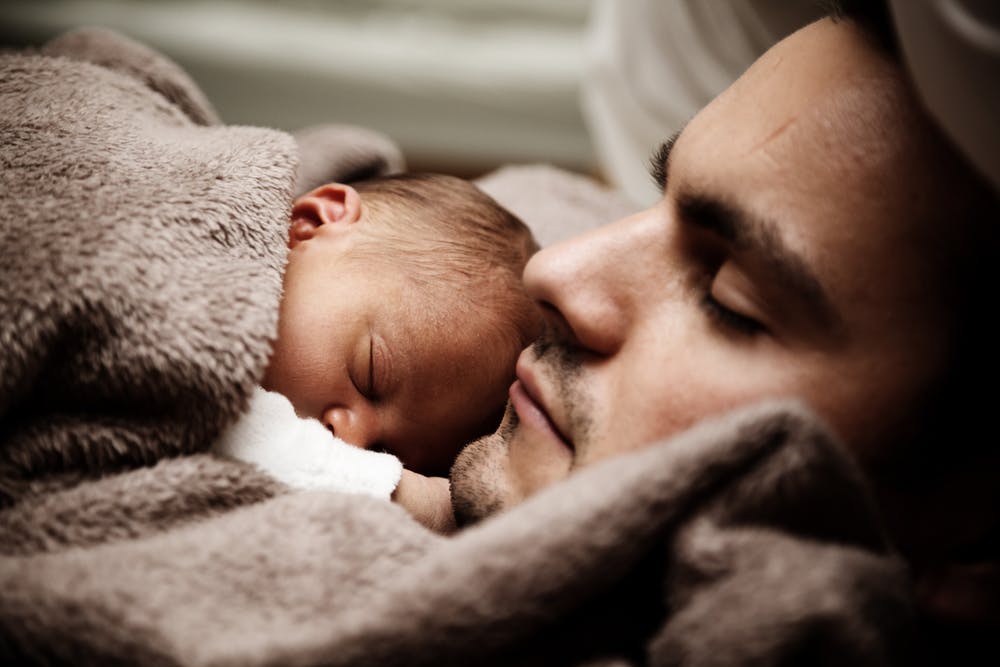Sleep, the most coveted thing for a new parent. It’s amazing just how sleep deprived we can become in those first several months. With the help of sleep expert, Katie Sanzi, we have put together a sleep guide for new parents (and not so new parents) that covers everything from newborn sleep to sleep regression to switching from a crib to a bed.
Katie Sanzi is a certified sleep consultant, who has been helping families all over the world get the sleep they need. Katie is a certified Sleep Sense consultant. Sleep Sense is recognized by the Association of Professional Sleep Consultants and based in the latest pediatric sleep science. To date Katie has 100% success with the families she works with. Katie is also the mother of a toddler, so she knows first hand how valuable a good night sleep can be!
Safe Sleep
HealthyChildren.org provides details about the American Academy of Pediatrics safe sleep guidelines.
Here are the formal recommendations for safe infant sleep practices from the AAP:
- Always place baby to sleep on his back. This applies to naps and nighttime.
- Use a firm sleep surface, such as a safety-approved mattress and crib.
- If baby falls asleep in carseat or swing, move baby to firm surface as soon as possible.
- Keep soft objects and loose bedding out of the baby’s sleep area.
- Share a room, not a bed. Keep baby in room with parents for 6 months to a year.
- Do not allow baby to sleep on a couch, sofa, or armchair.
- Do not smoke during pregnancy or near babies.
Straightforward as the recommendations may seem, the CDC report proves they have the power to save lives.
Safe sleep practices are critical to reduce the risk of sleep-related infant deaths but not all parents are heeding the advice!
A recent study found that:
- One in five (22%) mothers reported not placing their baby on his or her back to sleep.
- More than half of mothers (61%) reported bed sharing with their baby.
- Two in five (39%) mothers reported using soft bedding in the baby’s sleep environment.
How to Soothe a Fussy Baby
Probably the most commonly asked question of new parents is how do I soothe a fussy baby?
Let’s take a closer look at the problem. Why is the baby fussing in the first place. I have written articles on interpreting your baby’s cry, but it is important to ease out several contributing factors. First check all the basics; Is her diaper dry? Is she in pain? Is she uncomfortable? Is her temperature too hot or cold? Is she hungry? Really think about this last one. It can be hard to know if your baby is hungry. You may think she can’t possibly be hungry because she just ate, but if you are breast-feeding, maybe she didn’t get as much as she usually does, or maybe she is having a growth spurt and needs more calories. Once you have ruled out all of these possibilities, we can explore a little deeper.
Here are some strategies to soothe a fussy baby:
- Baby massage- It can be uncomfortable when babies have gas or need to move their bowels. It is not necessarily painful, but it is a new sensation because babies don’t move their bowls in utero and anything you can do to help move things along quicker will be beneficial. Baby massage has several strokes to the abdominal area that specifically help to move the bowls. Baby massage also works to calm the baby, regulate sleep/wake cycles and help babies get deeper/more restful sleep.
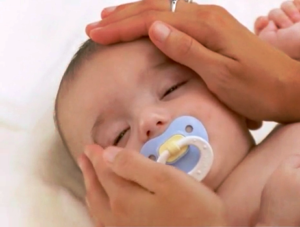 Swaddle- Babies are calmed by the neutral warmth and pressure of a good swaddle because it mimics the containment they felt in the womb.
Swaddle- Babies are calmed by the neutral warmth and pressure of a good swaddle because it mimics the containment they felt in the womb.- Rock the baby- Babies are calmed by gentle movement because it also mimics the womb and helps them to feel calm and more relaxed. Don’t be afraid to really swing baby from side to side. Some babies prefer bigger movements.
- Shush the baby- Bring the baby’s ear close to your face and make a shushing noise in her ear. It is actually very loud in utero. Baby hears the swishing of the amniotic fluid. Mom’s heartbeat and their own heart beat, so by recreating that swishing sound, you are creating a calm environment for your baby.
- White noise-For the same reason that babies are calmed by the shushing noise, babies like white noise and it is very calming for your babies. You can buy noise machines or use white noise apps on your smartphone.
- Sing to your baby- Your baby is calmed by the sound of your voice because it is familiar to him. Talking and singing to him is reassuring and calming.
- Rhythmic patting-Babies are calmed by repetition. By patting your baby rhythmically, you are helping them relax. Don’t be afraid to pat her hard enough that her whole body feels it. Anything that your baby feels on her whole body is more calming than just feeling a sensation on part of her body. Think about the calming effect of a warm bath verses a trickle of water.
- Music- Babies are calmed by lullabies and gentle music because it causes the baby to focus on the sound of the music instead of crying.
- Read a book- Babies are soothed by the sound of your voice, so by reading to them or telling them a story, you help them to calm down and focus on your voice.
- Take the baby for a ride in the car- For most babies, riding in a car is calming and helps babies relax and fall asleep.
- Sucking-Sucking on a pacifier, nipple, finger (parent or baby’s) actually stimulates the release of a calming hormone. Sucking is very relaxing for your baby and that’s why pacifiers are so popular!
Sometimes babies just need to fuss. It is their only way of communicating. Sometimes babies are overstimulated and just need that release. Try to relax and let your baby cry sometimes if they need to. Usually a combination of these strategies will work to calm a baby, but if nothing works and your baby’s cry is elevating in pitch and she becomes inconsolable, you may want to contact your healthcare provider.
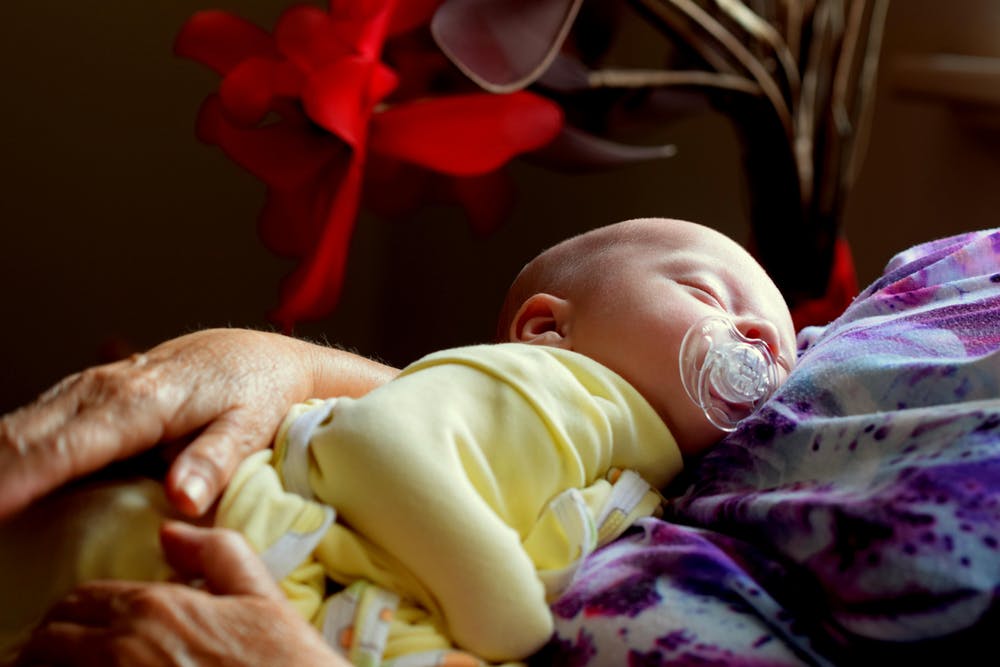
Eight Tips for Easing Separation Anxiety to Help Baby Sleep
By Katie Sanzi
Raising kids is a high-stakes responsibility, and in this age of social media and easy access to information about anything and everything, parents are easily overwhelmed with feelings of guilt and inadequacy. As a sleep consultant, I see this all the time from parents whose babies aren’t sleeping well.
One of the other major contributors to the, “I’m doing something wrong,” sensation is separation anxiety; that oh-so-challenging part of a child’s life when they start to completely flip their lids whenever Mom’s not around.
The thought process, it would appear, is one of…
- Mommy’s not in the room.
- Therefore, Mommy is somewhere else.
- I would prefer to be there with her.
- Make that happen, or mark my words, I shall raise the most unimaginable of ruckuses.
And those ruckuses leave us, as parents, to wonder, “Am I doing something wrong?”
After all, a well-adjusted child should probably feel reasonably safe when they’re separated from their parents for a little while, shouldn’t they? I mean, Beth from the office says her baby is perfectly content being left with her sitter, even overnight. And that one mom in your Facebook group said that her baby will happily play by herself for hours at a time, and actually takes her toys to her room occasionally in order to get a little ‘me’ time.”
Two things to keep in mind. First, never compare yourself, or your child, to the mothers and babies described in the parenting groups on social media. Much like everything else on Facebook and Instagram, these experiences are almost always conveyed through the rosiest of lenses. And second, separation anxiety is completely normal, expected, and a sign of a healthy attachment between parent and child.
So what is it, exactly? Separation anxiety typically starts to occur around 6-8 months of age, when your little one starts to realize that things continue to exist, even when they’re not in sight. It’s a cognitive milestone known as “object permanence” which is defined as, “the understanding that objects continue to exist even when they cannot be observed.”
In other words, out of sight no longer means out of mind. So as your baby begins to grasp this concept, they realize that if you, their favorite person in the whole world, are not there, you’re elsewhere. And, hey, wait a minute. If that’s the case, then you might not be coming back.
It’s kind of fascinating when you think about it, but it’s also a little heartbreaking. This realization, for a baby, is obviously cause for full-blown panic. The thought of a parent leaving and not returning causes anxiety in most grown-ups I know, so you can hardly expect an infant to take it with great decorum.
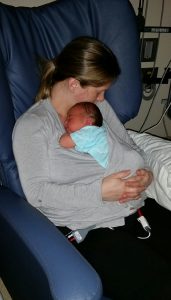 Anyway, that’s what happens in your little one’s brain when they suddenly start having a fit every time you leave the room. It’s normal, it’s natural, and it’s a sign that your little one is learning, and that they have a secure attachment to their parent. Awesome. But, as many of us know, it also means that leaving them with a sitter or dropping them off at day care can be an absolute horror show.
Anyway, that’s what happens in your little one’s brain when they suddenly start having a fit every time you leave the room. It’s normal, it’s natural, and it’s a sign that your little one is learning, and that they have a secure attachment to their parent. Awesome. But, as many of us know, it also means that leaving them with a sitter or dropping them off at day care can be an absolute horror show.
But what we really want to know, or at least what I really wanted to know when it happened with my child, isn’t “What’s causing this?” What I wanted to know was, “How do I prevent it?”
Well, the truth is, you probably wouldn’t want to if you could. I mean, really, wouldn’t you be just a little devastated if you left your child with a stranger and they were just completely OK with it? “Bye Mom! See you at dinner! Don’t worry about me. You guys have fun!”
I’m guessing that would actually be significantly more troubling than some tears and howling.
But we obviously want to keep things at a happy medium, and if you’re struggling with a child who’s pitching an absolute fit every time you try to run an errand or head out for date night, I’ve got some suggestions to take the edge off until this phase runs its course.
- Lead by Example
Your little one follows your cues, so if you’re not willing to let her out of your sight, they probably, albeit unconsciously, feel like they’re not safe if you’re not in the room. So designate a room where they can explore a little and play without your direct supervision. It’s a small adjustment, but it has a tremendous effect.
- Don’t Avoid It
Learning about separation and reunion is an important milestone, so don’t just take the path of least resistance and stay with your child 24/7 until they’re seven years old. (It happens. Believe me.) Let them know that it’s okay for them to get upset when you leave and reassure them that you’ll always come back when you do. If there are some tears around it, that’s alright. This is an important concept that they need to get on board with.
- Start Slow
Once your little one has started to demonstrate the understanding that they’ll be spending some time with someone besides a parent, make it a short outing. Don’t plan on dinner and a movie or an overnighter for the first few attempts.
- Start With Someone Familiar
Kids typically do a little better being left with a grandparent or family friend who they’ve already spent some time with, and who they’ve grown to trust a little, so call in a favor, put some wine in the fridge, and plan to spend at least an hour away from the house for the first few attempts.
- Stick Around for a While
After your sitter, parent, friend, or whoever is watching your little one arrives, plan to hang around for a half hour or so. Seeing that this is someone you’re familiar with will go a long way in reassuring your child that they’re “good people” and worthy of their trust.
- Face the Music
Many of us have, at least once, attempted to distract our toddlers and then sneak out the door without saying goodbye. After all, it’s the goodbye that provokes the reaction, right? But even if it provokes some tears, it’s important for your child to understand that you’re going to leave sometimes, and that you’ll be back when you say you will.
- Establish a Routine
Much like bedtime, a solid, predictable goodbye routine helps your little one recognize and accept the situation. A set number of kisses and hugs, a memorable key phrase, and a clear indication of when you’ll be back should be just the right balance of short and reassuring.
- Speak in Terms They’ll Understand
Instead of telling them how long you’ll be gone, tell them when you’ll be back in regards to their schedule. After nap time, before bed, after dinner, before bath time, and so on.
Nothing is going to prevent your child from getting a little bit upset when you leave, (And as I said before, thank the stars for that, because if they didn’t, oh your poor heart,) but you can definitely keep the fuss to a minimum.
for that, because if they didn’t, oh your poor heart,) but you can definitely keep the fuss to a minimum.
Now, I should add here that these techniques are suggested for kids who are dealing with ordinary, everyday separation anxiety. There is also a condition called Separation Anxiety Disorder which is obviously more serious and warrants a trip to your pediatrician if you suspect your little one might be afflicted with it.
But for run-of-the-mill fit-pitching when you try to leave the house for an hour or two, these tips should go a long way towards remedying the problem. Be consistent, supportive, assertive, and calm. Before long, your child will understand the concept of you leaving and coming back.
In fact, this concept that will also come in handy when you start to leave them alone in high school.
“I’m leaving for the night, but rest assured, I’m coming back. So you just remember that before you invite your rowdy friends over.”
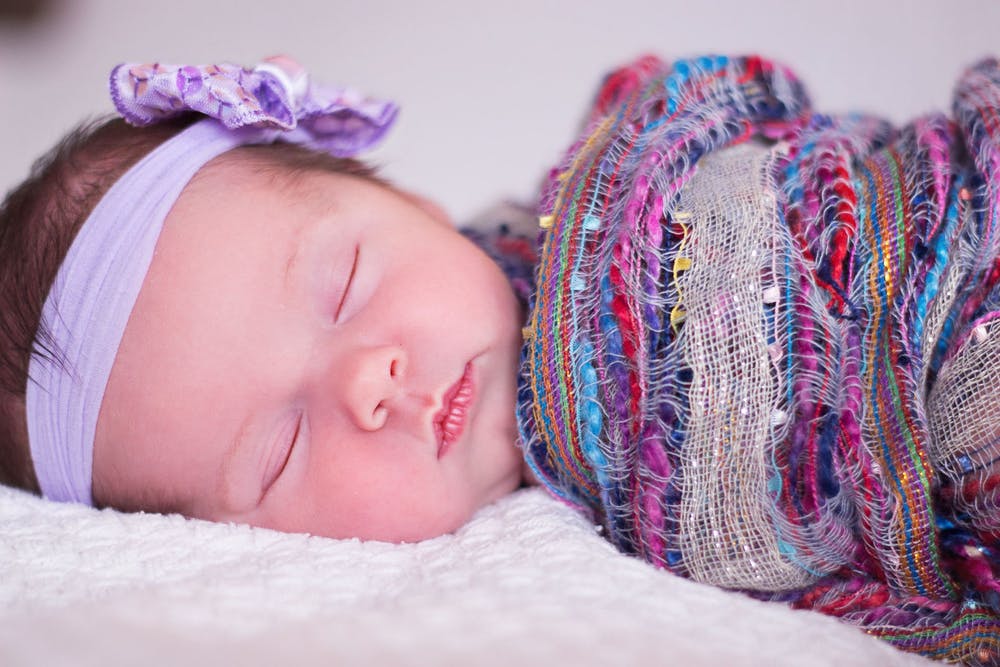
5 Common Myths About Baby’s Sleep
By: Katie Sanzi
I can clearly remember, like most mothers I’m sure, the very moment I gave birth to my first child. I was absolutely buried in feelings of love and gratitude. And then, about ten to fifteen seconds later, I was equally buried in advice, suggestions, and information. This was all thrown at me with the best intentions, but it was overwhelming nonetheless. I can’t imagine the number of times I heard the words, “You should,” “You’ll want to,” and “You’ve got to.” If there’s no such number as a “kajillion,” it should be created specifically in order to measure the number of suggestions a new mother receives in her first year of motherhood.
 Of course, those feelings of love and gratitude persist to this day, and so do the recommendations.
Of course, those feelings of love and gratitude persist to this day, and so do the recommendations.
And that’s coming from an expert, a professional, in the child care field. I can only imagine the tidal waves of hints and advice that must overwhelm a mother who openly asks for it.
There’s no such thing as a casual mom. This gig is full-time, no matter if you’re a stay-at-home-mom, a working mom, or somewhere in between. Your kids are on your mind 24/7, no matter what else might be going on, so we tend to do a lot of research, and with access to unlimited data via the internet, Barnes & Noble, or your mother-in-law, (the latter having the most to say, by a mile) it’s inevitable that we get someconflicting information. Although when it comes to kids, I think the discussion even eclipses politics for the sheer divisiveness and claiming opinion as fact.
So today, I want to focus on my area of expertise, that being sleep, and try to dispel some of the more popular myths I’ve seen in parenting forums, heard from Mom groups I’ve talked with, or had angrily shouted in all caps on my Facebook page.
- Sleeping too much during the day will keep baby up at night.
Not likely, except in extreme cases. Unless your little one is sleeping practically all day and up all night, you probably don’t need to concern yourself with the length of their naps. Newborns especially need a ton of sleep. In fact, up until about 6 months, I don’t recommend that your little one be awake for more than about 2 – 21/2 hours at a time. For newborns, that number is more like 45 minutes to an hour.
What keeps babies awake at night, more than anything else, is overtiredness. You might think that an exhausted baby is more likely to sack out for a full night than one who slept all day, but it’s actually just theopposite. The reason we refer to it as being “overtired” is because baby has missed the “tired” phase and their bodies start to kick back into gear, which keeps them from falling and staying asleep. A baby who has gotten a decent amount of sleep during the day is far less likely to miss the sleep window.
There are substantial variations depending on baby’s age and the length of their naps, but up to that 6 month mark, it’s really not uncommon for baby to be sleeping around 5 hours a day outside of nighttime sleep, so if your little one is still within those guidelines, let them snooze.
- Sleeping is a natural development and can’t be taught.
Sleeping is natural, absolutely. Everybody wakes up and falls back to sleep multiple times a night, regardless of their age. So no, you can’t teach a child to be sleepy. What can be taught, however, is the ability to fall back to sleep independently.
The typical “bad sleeper” of a baby isn’t less in need of sleep, or more prone to waking up. They’ve just learned to depend on outside assistance to get back to sleep when they wake up. Once your little one has figured out how to get to sleep without assistance from outside sources, they start stringing those sleep cycles together absolutely effortlessly, and that’s the secret to “sleeping through the night” as most parents understand it.
- Babies will naturally dictate their own sleep schedule
The idea that infant physiology is so flawlessly, naturally programmed to regulate a baby’s schedule is, to be blunt, laughable. Nothing against Mother Nature, but she doesn’t provide us with a ready-to-run baby like she does with say, the blue wildebeest. (Seriously? Walking six minutes after birth? Outrunning predators within a day? Our babies are cuter, but clearly not as prepared for battle straight out of the womb.)
Our babies need extensive care and help in their development, and their sleep cycles are unbelievably erratic if left unregulated. If they miss their natural sleep cycle by as little as a half hour, their cortisol production can increase which causes a surge in energy, and things quickly spiral out of control. So as much as I wish babies could just fall asleep when they’re tired, it simply doesn’t work that way. That’s not to say that you shouldn’t respond to their cues, but you shouldn’t rely exclusively on them either.
- Sleep training is stressful for the baby and can affect the parent-child attachment.
Nope. And this isn’t just me talking here. This is the American Academy of Pediatrics. If there’s a more reliable source of 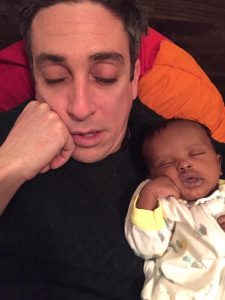 baby health information, they’re astoundingly bad at marketing themselves. And according to a 2016 studyconducted by eight of their top researchers, behavioral intervention, (A.K.A Sleep training) “provide(s) significant sleep benefits above control, yet convey(s) no adverse stress responses or long-term effects on parent-child attachment or child emotions and behavior.” Not a whole lot of gray area there.
baby health information, they’re astoundingly bad at marketing themselves. And according to a 2016 studyconducted by eight of their top researchers, behavioral intervention, (A.K.A Sleep training) “provide(s) significant sleep benefits above control, yet convey(s) no adverse stress responses or long-term effects on parent-child attachment or child emotions and behavior.” Not a whole lot of gray area there.
- Babies are not “designed” to sleep through the night.
Putting aside our religious beliefs for a moment, I think we can all agree that, even if babies were “designed” somehow, whoever did the designing left plenty ofroom for some upgrades. Trusting your child’s physiology to dictate their sleep schedule, their eating habits, their behavior, or just about any other aspect of their upbringing is a recipe for disaster.
Is your toddler designed to eat three pounds of gummi bears? Surely not. Will they if you don’t intervene. Without a doubt. Is your baby designed to avoid predators? If so, nobody told my little ones, who would have happily hugged a hungry Siberian tiger if it approached them. (They might still, I don’t know. It’s never come up.)
Our little ones need our expertise and authority to guide them through their early years, and probably will for decades after that. This is especially true when it comes to their sleep. Some babies are naturally gifted sleepers, for sure, but don’t rely onthe advice of those who tell you that babies should dictate their schedules. You’re in charge because you know best, even if it may not feel like it sometimes.
There are obviously plenty more myths and misconceptions surrounding babies and their sleep habits, but these are some of the most important to get the facts on.
Remember, there are endless posts on social media and websites that portray themselves as factual, but there’s nothing stopping them from making that claim, regardless of their accuracy. You can find peer-reviewed scientific study on all things baby-related, and trusted sources like the American Academy of Pediatrics, the National Institutes of Health, Britain’s National Health Service, Canada’s Hospital for SickChildren, the World Health Organization, and other national children’s health organizations are excellent sources of information you can feel confident about using to answer questions about your baby’s health.
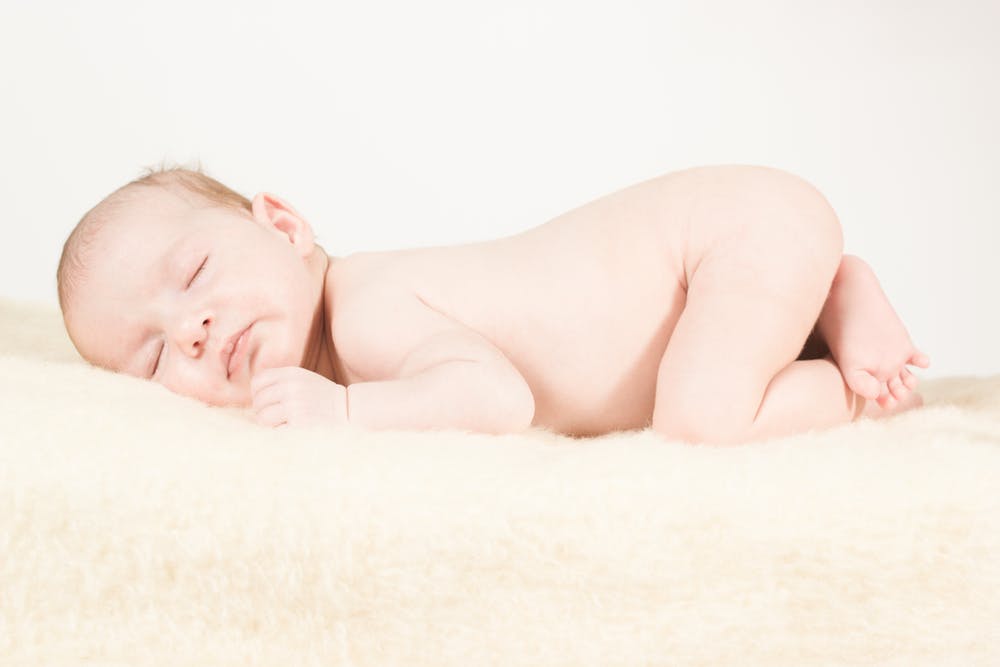
Extending Your Baby’s Nap Time
By: Katie Sanzi
Tell me if this scenario sounds familiar…your baby wakes up in the morning after a solid night’s sleep. You feed her, change her, play with her for a little bit, take her for a little walk outside, then rock her to sleep and put her gently into her crib for her morning nap. Then, 30 minutes later, she wakes up fussy and irritable and, despite your pleading, bargaining, and offers of riches, refuses to go back to sleep. So after half an hour of trying to put her back down, you finally give in, hoping she’ll be that much more tired when her afternoon nap rolls around, only to have the exact same scenario play out again, and baby is a cranky ball of unhappiness for the rest of the day.
Sleep, like food, is one of those elements where baby’s got the final say on whether or not they’re going to cooperate, so there’s no sense trying to force the issue. If they’re not sleeping, just leaving them in their room usually won’t fix things.
So here’s what’s going on, and how to fix it. Babies, just like the rest of us, sleep in cycles. We start off in a light state where we’re easily woken up, then gradually fall into a deeper stage where even loud noises or movement might not be able to rouse us. This, incidentally, is the good stuff. This is the really rejuvenative, restful sleep where our brains and bodies do all of the maintenance work that leaves us refreshed, clear-headed and energetic when we get enough. Once we’ve come to the end of the deep-sleep cycle, we slowly start coming back to the light stage again, and typically we wake up for a few seconds and then drift off again, and the whole thing starts again.
In adults, one of those cycles typically takes about an hour and a half. In babies, it can be as little as 30 minutes. So the fact that your baby is waking up after only 30 minutes is actually completely natural. In fact, if she wasn’t waking up regularly, that might be cause for concern.
“But,” you’re thinking, “I have friends whose babies nap for two or three hours at a time.” Well, that’s partially true. But in a more literal sense, they’re stringing together several sleep cycles in a row. The only difference between their baby and your baby is…
Drumroll please…
They’ve learned how to fall back to sleep on their own. That’s it. That really is the heart of the issue. Once your baby can fall asleep without help, they’ll start stringing together those sleep cycles like an absolute champ. That’s going to make your baby a whole lot happier and, on the self-indulgent side, leave you with two hours at a time to do whatever you like. (Granted, as a new mother, “whatever you like” might not mean what it once did, but still, two hours twice a day to catch up on motherhood-related tasks is something we can all appreciate.)
 So remember back at the start of that scenario, there you were, getting ready to put baby down for her nap, gently rocking her to sleep and then putting her down in her crib. Stop right there. That’s where you need to make some changes. Because in this scenario, you are acting as what we in the sleep consulting business refer to as a “sleep prop.” Sleep props are basically anything that your baby uses to make the transition from awake to asleep. Pacifiers are the most common example, but there are many others, including feeding, rocking, singing, bouncing, snuggling, and car rides. Now I’m not saying you shouldn’t rock your baby, or sing to her, or read her stories, or love her like crazy. You absolutely should. Just not to the point where she falls asleep.
So remember back at the start of that scenario, there you were, getting ready to put baby down for her nap, gently rocking her to sleep and then putting her down in her crib. Stop right there. That’s where you need to make some changes. Because in this scenario, you are acting as what we in the sleep consulting business refer to as a “sleep prop.” Sleep props are basically anything that your baby uses to make the transition from awake to asleep. Pacifiers are the most common example, but there are many others, including feeding, rocking, singing, bouncing, snuggling, and car rides. Now I’m not saying you shouldn’t rock your baby, or sing to her, or read her stories, or love her like crazy. You absolutely should. Just not to the point where she falls asleep.
When it comes to bedtime, whatever time of the day that might be, put your baby down in her crib, while she’s still awake, and let her fall asleep on her own. There might be a little bit of protest for a day or two, but for the majority of my clients, the results start to materialize in about two or three days. Think about that. Two or three days, and you and your little one could be enjoying the extraordinary benefits of proper sleep. She’ll be happier, healthier, more energetic, and you’ll both sleep better at night to boot.
Some other pointers for extending baby’s nap time…
- Keep the bedroom as dark as possible. Buy some blackout blinds if the sun is getting in, or if you’re on a budget, tape some black garbage bags over the windows. It doesn’t have to be pretty, it just has to be functional.
- White noise machines are useful if baby tends to wake up due to the neighbor’s barking dog, the inconsiderate delivery guy ringing the doorbell, or any other noise that might startle them out of their nap. Just make sure it’s not too close to their ears and not too loud. 50 dB is the recommended limit.
- If you’re running into trouble applying these suggestions, give me a call and set up a free 15 minute consultation. The solution might be simpler than it appears, and most of my clients see a dramatic improvement in just one or two sessions.
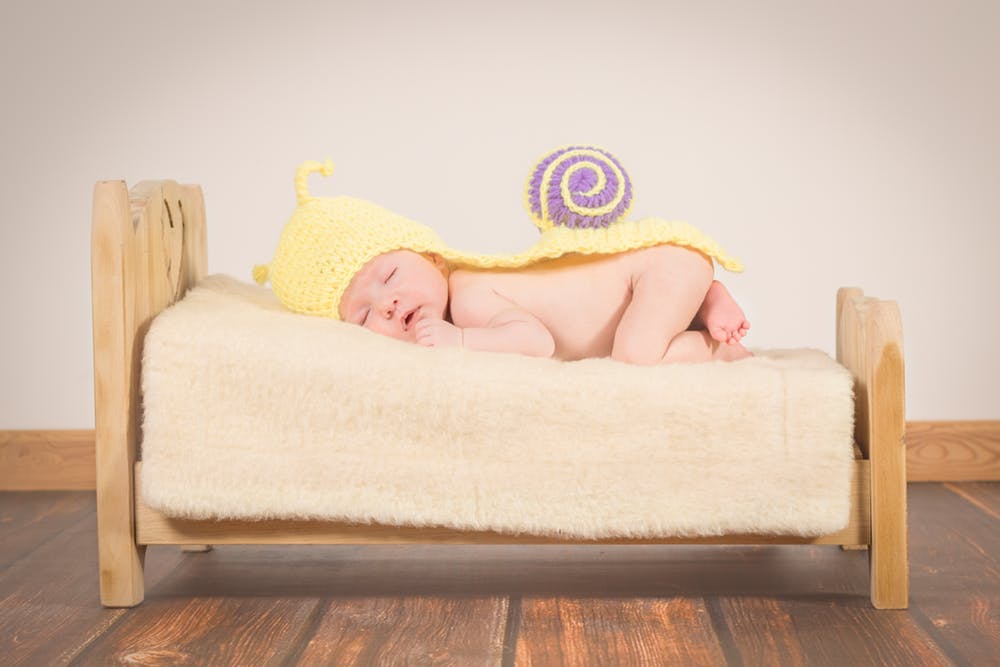
Four Month Sleep Regression
By Katie Sanzi
As a professional sleep consultant, I hear the term “regression” used in regards to just about every imaginable circumstance. Essentially, if baby doesn’t sleep well for a couple of nights, parents start dropping the ‘R’ word. Some people subscribe to the idea that there’s an eight month regression, a 9 month regression, a 1 year regression, as well as teething regressions, growth spurt regressions, and so on. Others see these as simple hiccups caused by extenuating circumstances.
But the four-month regression, everybody agrees on, and for good reason. It’s the real deal, and it’s permanent.
So in order to understand what’s happening to your baby during this stage, first you need to know a few things about sleep in general. So here’s the science-y part, told in plain English.
Many of us just think of sleep as an on-or-off situation. You’re either asleep or you’re not. But sleep actually has a number of different stages, and they make up the “sleep cycle,” which we go through several times a night.
Stage 1 is that initial stage we’re all familiar with where you can just feel yourself drifting off, but don’t really feel like you’ve fallen asleep. Anyone who has ever seen their partner nodding off in front of the TV, told them to go to bed, and gotten the canned response of, “I wasn’t sleeping!” knows exactly what this looks like.
Stage 2 which is considered the first “true sleep” stage. This is where people tend to realize, once woken up, that they actually were sleeping. For anyone taking a “power nap,” this is as deep as you want to go, or else you’re going to wake up groggy.
Stage 3 is deep and regenerative. Also known as “slow wave” sleep, this is where the body starts repairing and rejuvenating the immune system, muscles tissue, energy stores, and sparks growth and development.
Stage 4 is REM (rapid eye movement) sleep. This is where the brain starts to kick in and consolidates information and memories from the day before. It’s also the stage where we do most of our dreaming.
 Once we’ve gone through all of the stages, we either wake up or come close to waking up, and then start over again until the alarm goes off. So what does this have to do with the dreaded regression we were talking about originally?
Once we’ve gone through all of the stages, we either wake up or come close to waking up, and then start over again until the alarm goes off. So what does this have to do with the dreaded regression we were talking about originally?
Well, newborn babies only have 2 stages of sleep; stage 3 and REM, and they spend about half their sleep in each stage. But at around the third or fourth month, there is a reorganization of sleep, as they embrace the 4-stage method of sleep that they’ll continue to follow for the rest of their lives.
When this change takes place, baby moves from 50% REM sleep to 25% in order to make room for those first two stages. So although REM sleep is light, it’s not as light as these 2 new stages that they’re getting used to, and with more time spent in lighter sleep, there’s more of a chance that baby’s going to wake up. That’s not to say that we want to prevent or avoid baby waking up. Waking up is absolutely natural, and we continue to wake up three, four, five times a night into adulthood and even more in old age. As adults, however, we’re able to identify certain comforting truths that baby might not be privy to. When we wake in the night, we’re able to recognize that, “Hey, I’m here in my bed, it’s still nighttime, my alarm isn’t going to go off for another three hours, and I’m reasonably certain that there are no monsters lurking under my bed. I can go back to sleep” And we do. Usually so quickly that, the next morning, we don’t even remember the brief encounter with consciousness.
A four month old baby, of course, lacks these critical thinking skills. To a four month old baby who fell asleep at her mother’s breast, the reasoning could go much more to the tune of, “OK, last thing I remember, there was a familiar, beloved face, I was having dinner, and someone was singing me a soothing song about the Teddy Bears’ Picnic. Now I’m alone in this dark room, there’s no food, and there’s probably at least three, possibly four, scary monsters in the immediate vicinity.” That’s probably an exaggeration, but who knows what goes on in the mind of a four month-old baby?
Anyway, now that baby suddenly realized that Momma’s not around, and they’re not entirely sure where they’ve gone, the natural response is to do a little freaking out. That stimulates the fight-or-flight response and, next thing you know, baby’s not going back to sleep without a significant amount of reassurance that everything is OK. The other major contributor to this 4 month fiasco, I find, is that up until this point, parents have either been putting their baby to sleep with a pacifier, or by rocking them, or by breastfeeding them, or some similar technique where baby is helped along on the road to falling asleep.
Now that baby’s spending more time in light sleep, and therefore has a higher probability of waking up, this suddenly becomes a much bigger issue. These sleep props or sleep associations can be very sneaky indeed, because although they may be helpful in getting your little one to that initial nodding off stage, the lack of them when they wake up means that baby’s not able to get back to sleep again without some outside help. Cue the fight-or-flight, the crying, and the adrenaline. When this starts happening every half an hour, parents can find themselves in a nightmarish situation.
So, the good news for anyone experiencing the dreaded Four Month Sleep Regression is that it’s not, in fact, a regression at all. A regression is defined as “reversion to an earlier mental or behavioral level,” and that’s actually the opposite of what your baby is experiencing. This would be much more aptly titled the “Four Month Sleep Progression”
So, onto the big question. What can you do to help your little one adjust?
First off, get all of that light out of baby’s room. I’m not kidding around here. You might think that baby’s room is dark enough, or that baby might not like the dark, and that it’s comforting to have a little bit of light coming through the windows or seeping in from the hallway. Nope. Baby’s room should be dark. I mean coal mine on a moonless night kind of dark. Tape garbage bags over the windows if  you have to, or cover them with tinfoil.
you have to, or cover them with tinfoil.
Newborns and infants are not afraid of the dark. They are, however, responsive to light. Light tells their brains that it’s time for activity and alertness, and the brain secretes hormones accordingly, so we want to keep that nursery absolutely pitch black during naps and bedtime.
The other nemesis of daytime sleep, (and nighttime for that matter, although not nearly as often) is noise. Whether its UPS ringing the doorbell, the dog warning you that the squirrels are back and for sure going to attack the house this time, or something falling on the floor three rooms away. With baby spending more time in lighter sleep, noises will startle them easily and wake them up, so a white noise machine is a great addition to your nursery.
“Wait, isn’t that a prop,” you’re asking. Well, in a way, it is, but it doesn’t require any winding, resetting, reinserting, or parental presence. It’s just there and it can be on as long as baby’s sleeping, so it’s not a prop we need to avoid.
Bedtime routines are also an essential component to getting your baby sleeping well. Try to keep the routine to about 4 or 5 steps, and don’t end it with a feed. Otherwise, you risk baby nodding off at the breast or the bottle, and that will create the dreaded “association” that we talked about earlier. So try to keep the feed near the beginning of the routine and plan the songs, stories, and getting into PJs towards the end. The whole process should be about 20 – 30 minutes long, and baby should go into their crib while they’re still awake. If you’re noticing baby getting fussy before bedtime, you’ve probably waited too long. Four month old babies should really only be going about two hours between snoozes, and bedtime should be between 7 and 8 at night.
Now, there are going to be regressions, actual regressions, later on in your little one’s youth. Traveling, illness, cutting teeth, all of these things can cause your little one to have a few bad nights in a row. But when it comes to the four month “progression,” I’m happy to report that this is a one-time thing. Once you’re through this, your baby will have officially moved into the sleep cycle that they’ll essentially be following for the rest of their life. Four glorious stages repeated multiple times a night. And by taking this opportunity to teach them the skills they need to string those sleep cycles together, independently, prop-free, without any need for nursing, rocking, or pacifiers, you’ll have given them a gift that they’ll enjoy for the rest of their young lives. Of course, some kids are going to take to this process like a fish to water, and some are going to be a little more resistant. If yours falls into the former category, count yourself as lucky, take delight in your success, and go ahead and gloat about it on Facebook.

Why Does My Baby Wake Up at 3 AM?
By: Katie Sanzi
That right there might be the single most common question new parents ask.
Is it a developmental milestone? A regression? Are they getting too much sleep during the day, or not enough? Maybe they’re just hungry. Maybe they’re too hot, or too cold. Well, the truth is that it could be any of those things, and it could be a combination of several of them. What that means, and what you’re probably already aware of, is that baby’s sleep is tremendously complicated. Their bodies and brains are rapidly going through significant changes, and by the time they’ve got one issue under control, a new one pops up to take its place. There are factors you can control, obviously. If baby’s too hot, you can turn up the AC or put a fan in the room. If they’re teething, a little Children’s Tylenol can often solve the problem, at least temporarily. But those are the simple fixes. The reason most people have such a challenging time with their babies’ sleep is because of problems thataren’t so simple, and don’t have obvious solutions.
Imagine this scenario: An 18 month old child gets plenty of fresh air and sunlight during the day, goes down easily for long, restful naps, but when bedtime rolls around, suddenly they’re full of energy and want to play. When they’re told it’s time for bed, they get upset and bedtime becomes a battle. Once they do finally get to sleep, they wake up several times at night and never sleep past 5:30 in the morning. So what’s going on? Is baby getting too much sleep during the day?
 That would be the reasonable assumption, for sure. After all, if us grown-ups were to take a 3 hour nap in the afternoon, there’s a good chance we’d have a hard time falling and staying asleep that night. But the opposite is almost always the case. What baby’s demonstrating in this scenario is actually a need for more sleep, not less. In order to understand this counterintuitive reasoning, first a little background on how this whole system of sleep works.
That would be the reasonable assumption, for sure. After all, if us grown-ups were to take a 3 hour nap in the afternoon, there’s a good chance we’d have a hard time falling and staying asleep that night. But the opposite is almost always the case. What baby’s demonstrating in this scenario is actually a need for more sleep, not less. In order to understand this counterintuitive reasoning, first a little background on how this whole system of sleep works.
About three hours prior to when we’re naturally prone to waking up, our bodies start secreting a hormone called cortisol, and if you’ve done some reading on your baby’s sleep prior to this, the sight of that word probably causes you to flinch a little. Cortisol is a stimulating hormone, and is also produced in times of stress in order to elevate the heart rate and stimulate the nervous system (incase, y’know, bears) but in the morning, it’s just trying to get us started. Think of it as Mother Nature’s caffeine. And if cortisol is our morning cup of coffee, melatonin is our evening glass of wine. Once the sun starts to go down, our bodies recognize the onset of night and begin to produce this lovely sleep- inducing hormone, which helps us get to sleep and stay asleep until morning, when the whole process starts over again. Melatonin production is increased and starts earlier in the evening when we awaken to some nice, bright sunlight. But as beautifully crafted as this system is, it’s not perfect and it’s easily confused. So in the situation we examined above, here’s what’s happening…
Baby’s taking great naps during the day, which is obviously wonderful, and she’s getting lots of time outdoors, so her  body’s ready to crank out some melatonin when nighttime rolls around. So what’s with that burst of energy right before bedtime?
body’s ready to crank out some melatonin when nighttime rolls around. So what’s with that burst of energy right before bedtime?
So when baby’s body has begun producing melatonin, there’s a narrow window of time when the body expects baby to be going to sleep. After all, she’s a baby. What’s she got to stay awake for? She doesn’t watch The Bachelor and she hasn’t discovered the internet yet. The brain instinctively decides that something isn’t right; that forwhatever reason, baby can’t sleep, (probably because, y’know, bears.) And if baby’s got a bear to run from, adding a shot of cortisol should help increase her chances for survival. So that’s exactly what it does. Baby’s system starts secreting cortisol and, before you know it, she’s a little bit cranked. This often shows up in the form of playfulness and an abundance of energy. In short, baby missed the window and now she’s going to have a hard time getting to sleep, but her behavior indicates anything but sleepiness.
So what does all of this have to do with the dreaded 3 A.M. wake ups?
Here’s what happens… Assuming your baby’s circadian rhythm is scheduling a 6 A.M. wake up, then her body starts to secrete cortisol three hours prior to that. And at this point, the melatonin production has ceased for the night. So baby hits the end of a sleep cycle around 3:00. She gets to that “slightly awake” state, and now there’s a little bit of stimulant and no natural sedative. This, combined with a lack of independent sleep skills, means that baby’s probably going to wake up fully, and have a really hard time getting back to sleep.
So now for the big question you’ve probably been hoping I might have an answer for. How do I fix it?
While there’s no quick fix for adjusting baby’s hormone production schedule, you can definitely help her out by getting her outdoors during the day as much as possible. As I mentioned before, natural light during the day is the big cheerleader for melatonin production at night. It also helps to ensure that baby’s room is as dark as you can get it at night, and start turning down the lights in the house at least an hour before you put her to bed. Simulating the sunset will help to cue that melatonin production so that it’s in full swing when she goes into her crib.
Avoid any TV, iPhone, tablet, or screen time of any kind for that same hour before bedtime. (Preferably even longer) as 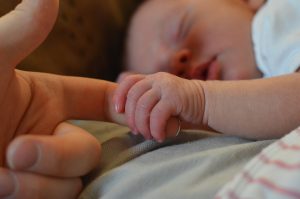 these devices emit a geyser of blue light, which will stimulate cortisol production right at the time when you’re trying to avoid it. But above all, the number one way to help your baby sleep through the night is to get her on a predictable, consistent sleep schedule and teach her the skills she needs to fall asleep independently. Because the truth is that you’re never going to prevent nighttime wake ups. We all wake up in the night, regardless of our age. As adults, we just have the ability to calmly assess the situation when we wake up in the dark, realize where we are, see that it’s still nighttime, and go right back to sleep. Most of the time we don’t even remember it the next morning. So although we can’t prevent baby from waking up at night, we can safely and effectively help her learn to recognize that she’s safe, in familiar territory, still tired, and capable of getting back to sleep on her own. And although I know I made light of it earlier, you should always check and make sure that baby’s room is absolutely, positively, 100% free of bears. Waking up to a snarling grizzly will set your baby’s sleep habits back immeasurably.
these devices emit a geyser of blue light, which will stimulate cortisol production right at the time when you’re trying to avoid it. But above all, the number one way to help your baby sleep through the night is to get her on a predictable, consistent sleep schedule and teach her the skills she needs to fall asleep independently. Because the truth is that you’re never going to prevent nighttime wake ups. We all wake up in the night, regardless of our age. As adults, we just have the ability to calmly assess the situation when we wake up in the dark, realize where we are, see that it’s still nighttime, and go right back to sleep. Most of the time we don’t even remember it the next morning. So although we can’t prevent baby from waking up at night, we can safely and effectively help her learn to recognize that she’s safe, in familiar territory, still tired, and capable of getting back to sleep on her own. And although I know I made light of it earlier, you should always check and make sure that baby’s room is absolutely, positively, 100% free of bears. Waking up to a snarling grizzly will set your baby’s sleep habits back immeasurably.


